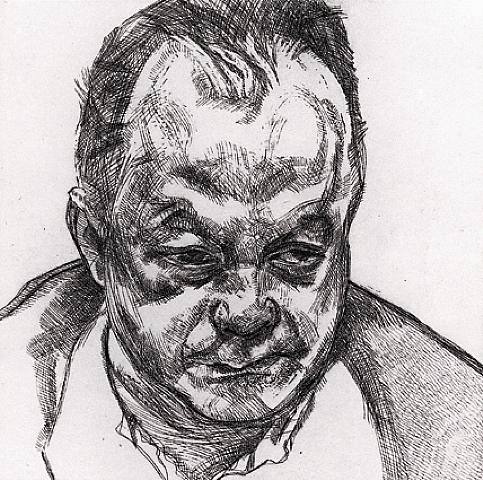Bruce Bernard’s photograph of Lucian Freud in His Studio has been cannily hung as a visual preface to an impressive, beautifully arranged retrospective of Freud’s etchings at the Scottish National Gallery of Modern Art. Here the painter stares at his photographer with a quizzical expression on his face. He wears a light blue shirt and loose-fitting trousers and stands with one or two pieces of necessary furniture about him – posing props, mostly – while in the background hangs a large work in progress, a double-portrait in oils. No one has captured Freud’s London studio, that strange world apart in London W11, with the acuity and sensitivity of Bernard, and here the painter comes across an almost feral creature, an artist-animal captured in his lair of creation. With hindsight, the photograph has been lent additional poignancy by the fact of Bernard’s death from cancer not long after after it was taken. Freud’s usual alert and slightly hunted stare seems shadowed by solicitude. Mortality is in the air.
Freud’s own Head of Bruce Bernard (1985) turns out to be one of the best of the many etchings in this, the first retrospective of his works in that medium. Like most of the artist’s etchings it is small in scale, a close-cropped study of a man’s face and nothing else. The painter has caught Bernard brilliantly with the etching needle, capturing the bony contours of his high and bulbous forehead, the intelligent surliness in his gaze, the slight laziness of the left eye, the puggish nose and the set, down-turned mouth.
Freud’s career as an etcher began in the late 1940s, when he was still painting in a tight, minute style influenced by Flemish Renaissance masters and the German painters of the 1920s associated with Neue Sachlichkeit (New Objectivity). A few oils...

Lucian Freud: Etchings 1946-2004, Scottish National Gallery of Modern Art, Edinburgh
21-03-2004

